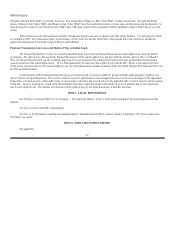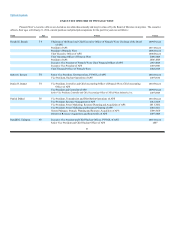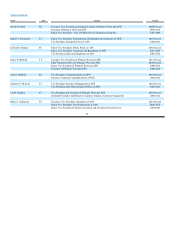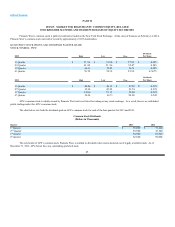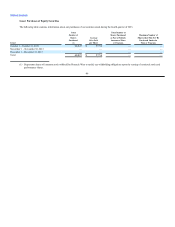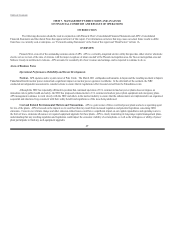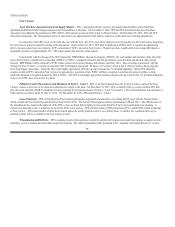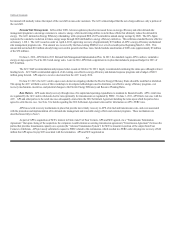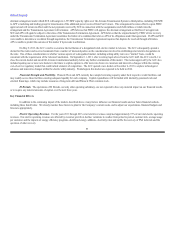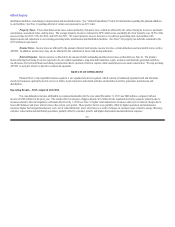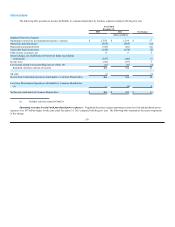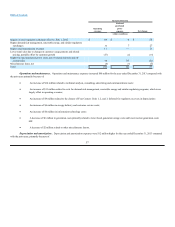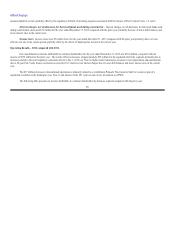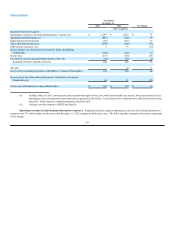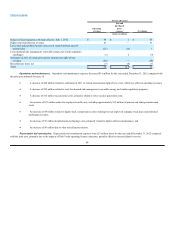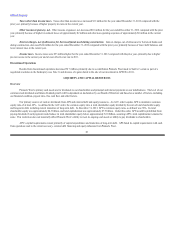APS 2013 Annual Report Download - page 54
Download and view the complete annual report
Please find page 54 of the 2013 APS annual report below. You can navigate through the pages in the report by either clicking on the pages listed below, or by using the keyword search tool below to find specific information within the annual report.
Table of Contents
below includes new transmission projects through 2016, along with other transmission costs for upgrades and replacements. APS is also working to establish
and expand smart grid technologies throughout its service territory to provide long-term benefits both to APS and its customers. APS is strategically deploying
a variety of technologies that are intended to allow customers to better monitor their energy use and needs, minimize system outage durations, as well as the
number of customers that experience outages, and facilitate greater cost savings to APS through improved reliability and the automation of certain distribution
functions, including remote meter reading and remote connects and disconnects.
Renewable Energy. The ACC approved the RES in 2006. The renewable energy requirement is 4.5% of retail electric sales in 2014 and increases
annually until it reaches 15% in 2025. In the 2009 Settlement Agreement, APS agreed to exceed the RES standards, committing to use APS’s best efforts to
obtain 1,700 GWh of new renewable resources to be in service by year-end 2015, in addition to its 2008 renewable resource commitments. Taken together,
APS’s commitment is currently estimated to be approximately 12% of APS’s estimated retail energy sales by year-end 2015, which is more than double the
existing RES target of 5% for that year. A component of the RES targets development of distributed energy systems (generally speaking, small-scale renewable
technologies that are located on customers’ properties).
On July 12, 2013, APS filed its annual RES implementation plan, covering the 2014-2018 timeframe and requesting a 2014 RES budget of
approximately $143 million. In a final order dated January 7, 2014, the ACC approved the requested budget. Also in 2013, the ACC conducted a hearing to
consider APS’s proposal to establish compliance with distributed energy requirements by tracking and recording distributed energy, rather than acquiring and
retiring renewable energy credits. On February 6, 2014, the ACC established a proceeding to modify the renewable energy rules so that utilities can establish
compliance without using renewable energy credits.
On July 12, 2013, APS filed an application with the ACC proposing a solution to fix the cost shift brought by the current net metering rules. In its
application, APS requested that the ACC cause all new residential customers installing new rooftop solar systems to either: (i) take electric service under
APS’s demand-based ECT-2 rate and remain eligible for net metering; or (ii) take service under the customer’s existing rate as if no distributed energy system
was installed and receive a bill credit for 100% of the distributed energy system’s output at a market-based price. APS also proposed that the ACC:
(i) grandfather current rates and use of net metering for existing and immediately pending distributed energy customers; and (ii) continue using direct cash
incentives for new distributed energy installations.
On December 3, 2013, the ACC issued its order on APS’s net metering proposal. The ACC instituted a charge on future customers who install
rooftop solar panels and directed APS to provide quarterly reports on the pace of rooftop solar adoption to assist the ACC in considering further increases. The
charge of $0.70 per kilowatt became effective on January 1, 2014, and is estimated to collect $4.90 per month from a typical future rooftop solar customer to
help pay for their use of the electricity grid. The new policy will be in effect until the next APS rate case.
In making its decision, the ACC determined that the current net metering program creates a cost shift, causing non-solar utility customers to pay
higher rates to cover the costs of maintaining the electrical grid. ACC staff and the state’s Residential Utility Consumer Office, among other organizations,
also agreed that a cost shift exists. The fixed charge does not increase APS’s revenue,
51



